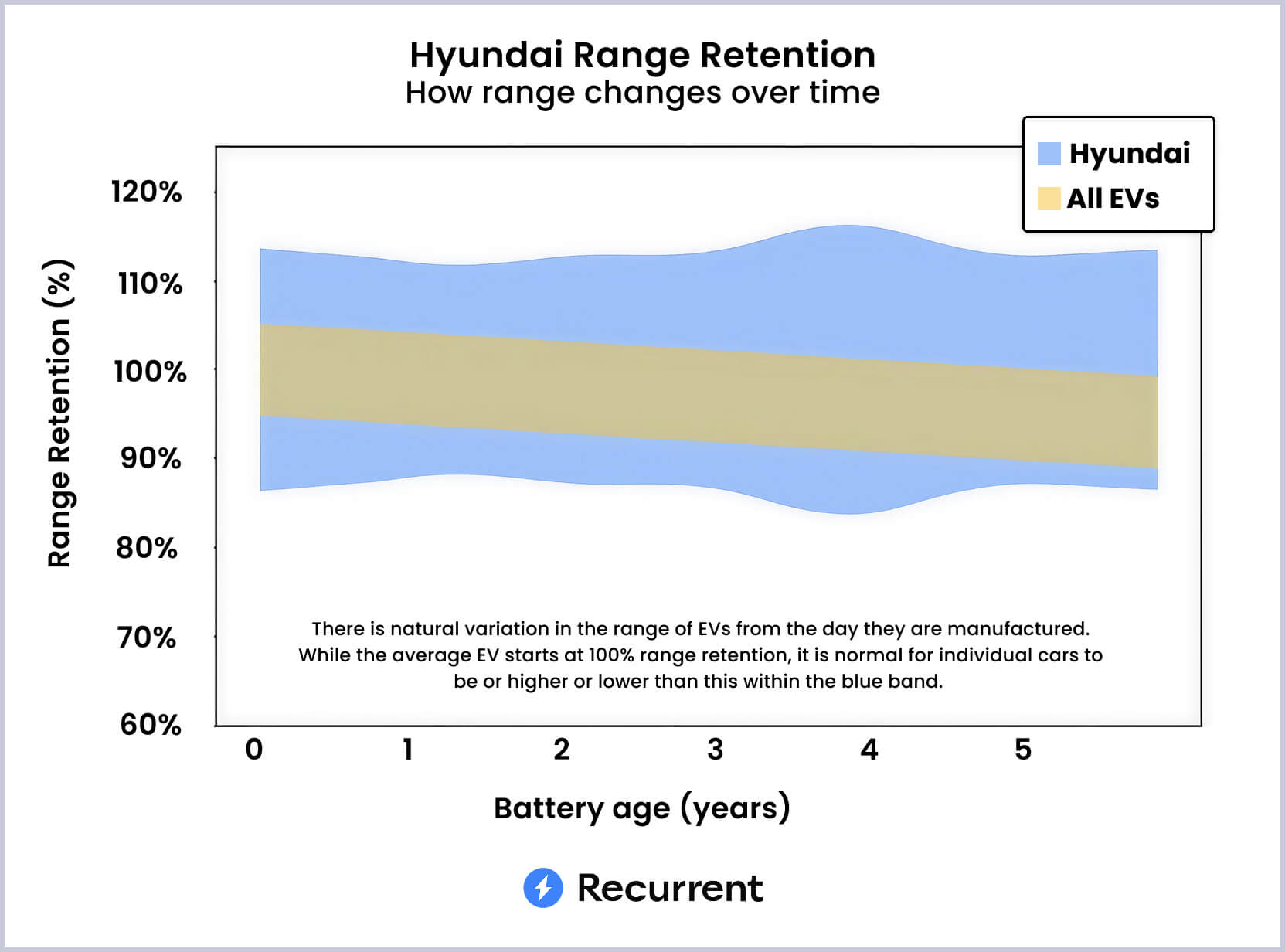




The Kona Electric has a tested range of 170 to 230 miles, depending on the trim and battery. That performance is 15% to 35% below the average of 2025 EV models. However, the Kona delivers 82% of its range in hot conditions and 78% of its range in cold conditions, which is only 1-2% less than the 2025 average.
The Kona Electric offers 120 MPGe, which works out to 3.7 miles per kWh. This puts it in the same class as Tesla's Model 3, which is the most efficient mass-produced EV on the road today.
Our community of Kona EV drivers give their car a Charging Score of 4.12/5, meaning that most drivers are somewhat satisfied with their charging experience. The most common complaint is that the DC Fast charging speeds do not get to or stay at their maximum of 70 kW, meaning that fast charging takes longer than advertised.
Onboard, the Kona EV is equipped with a respectable 7.2 kW charger, meaning that it can charge to full in around nine hours. With a standard 120V plug, it will get the standard 3-5 miles an hour, meaning that a full charge can take several days. The Kona EV is compatible with DC fast charging at speeds up to 70 kW which can add 80% charge in under 50 minutes. However, as noted, some drivers note that the maximum charge speed is hard to attain.
Hyundai has partnered with Electrify America to provide drivers of 2021+ Kona EVs with 250 kWh of free charging - enough for around 1,000 miles of driving.
The Kona EV uses lithium ion batteries - a power dense, high voltage technology that works well for storing a lot of energy.
The battery size, or battery capacity, is measured in kWh. All Kona EVs, regardless of model year or trim, have a 64 kWh battery. This is fairly average for a non-performance EV and is comparable to the size of Bolt, Model 3, and LEAF Plus batteries.
Hyundai offered a lifetime warranty on hybrid and electric vehicle batteries for the first owner, with a subsequent 10 year/ 100,000 mile warranty for subsequent owners. Starting with the 2020 model year, they changed the coverage to 10 years or 100,000 miles, guaranteeing their high voltage batteries will maintain at least 70% of their original capacity over this time.
This page shares Kona EV data collected from 92 drivers across the United States. Each of the 390 thousand miles driven helps to draw a picture of the driver experience. We polled our community to find out what they love and what they could leave with their vehicles.
Most liked features:
"It is really an affordable way to replace an ICE car without range anxiety"
"Charging for free at available stations, complimentary DC Fast occasionally and comp. from Electrify America, nice seats and amenities, immediate power with nearly 300 pd ft of torque, small but good storage and easy to maneuver"
"Small, nimble, and fun to drive"
Room to improve:
"Fast charging isn't as fast as some competitors. I see on average 25-35KW/h when using a fast charger."
"The lack of options such as electric sun roof, memory seats, electronically operated tailgate"
"The onboard range reliability. When on a highway doing 65+ mph, the range is quite inaccurate. Always leave myself an extra 10 miles per 100 miles driving 65+ mph so roughly 10% more.
Cost per range mile is one way to look at the value of an EV across different makes and models. It helps a shopper understand how much of the purchase price is really going towards range, as opposed to amenities, comfort, or brand name. The Kona EV has a cost per range mile of $132 to $166, making it a very affordable EV.
Recurrent uses data from the AFDC to determine the range of annual charging costs for the Kona EV. The highest electricity price we use is in Hawaii and the lowest in Louisiana. We assume an average driving pattern of 34 miles a day, 5 days a week, 49 weeks a year with 25% highway driving, plus a few additional highway road trips. For a Kona EV of either trim, this puts the annual charging costs between $317 - $1015. More detailed and personalized values can be calculated at the link above.